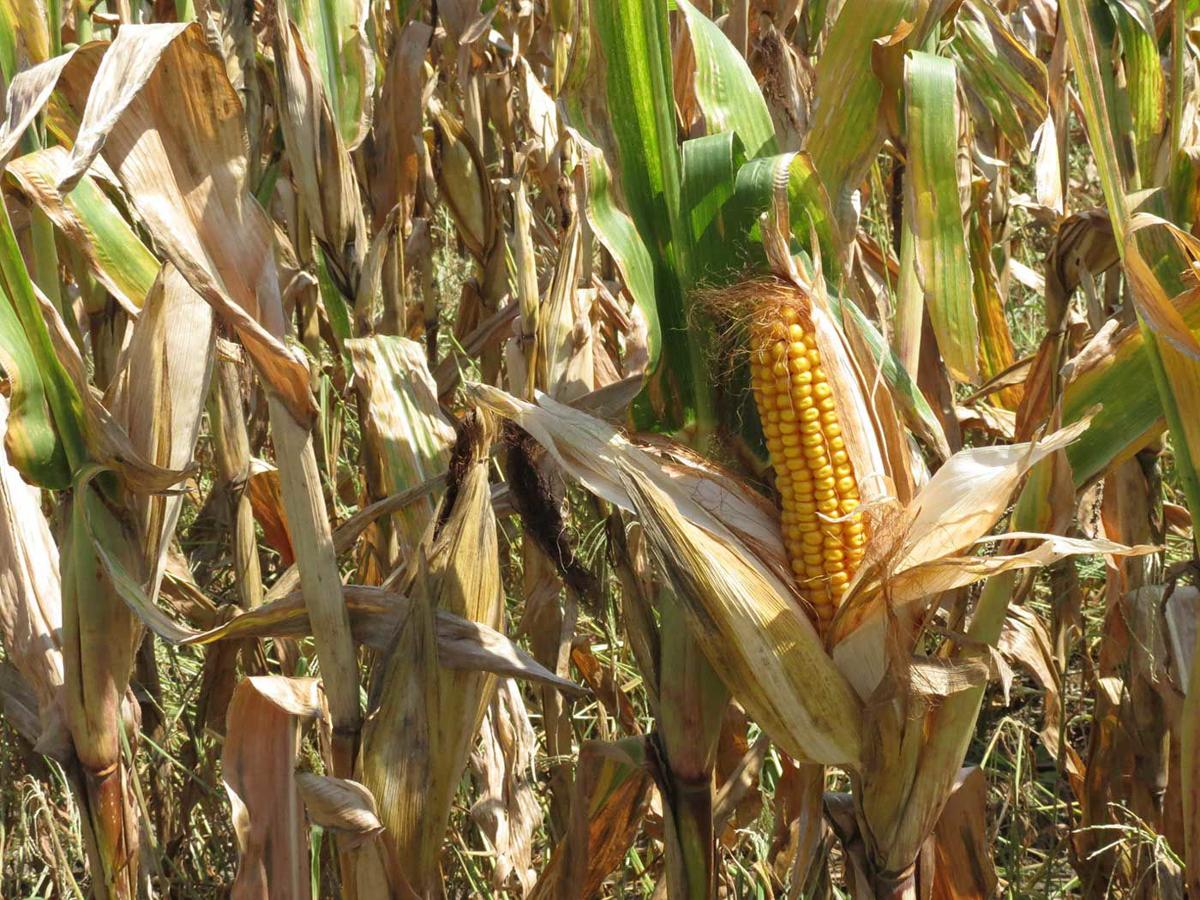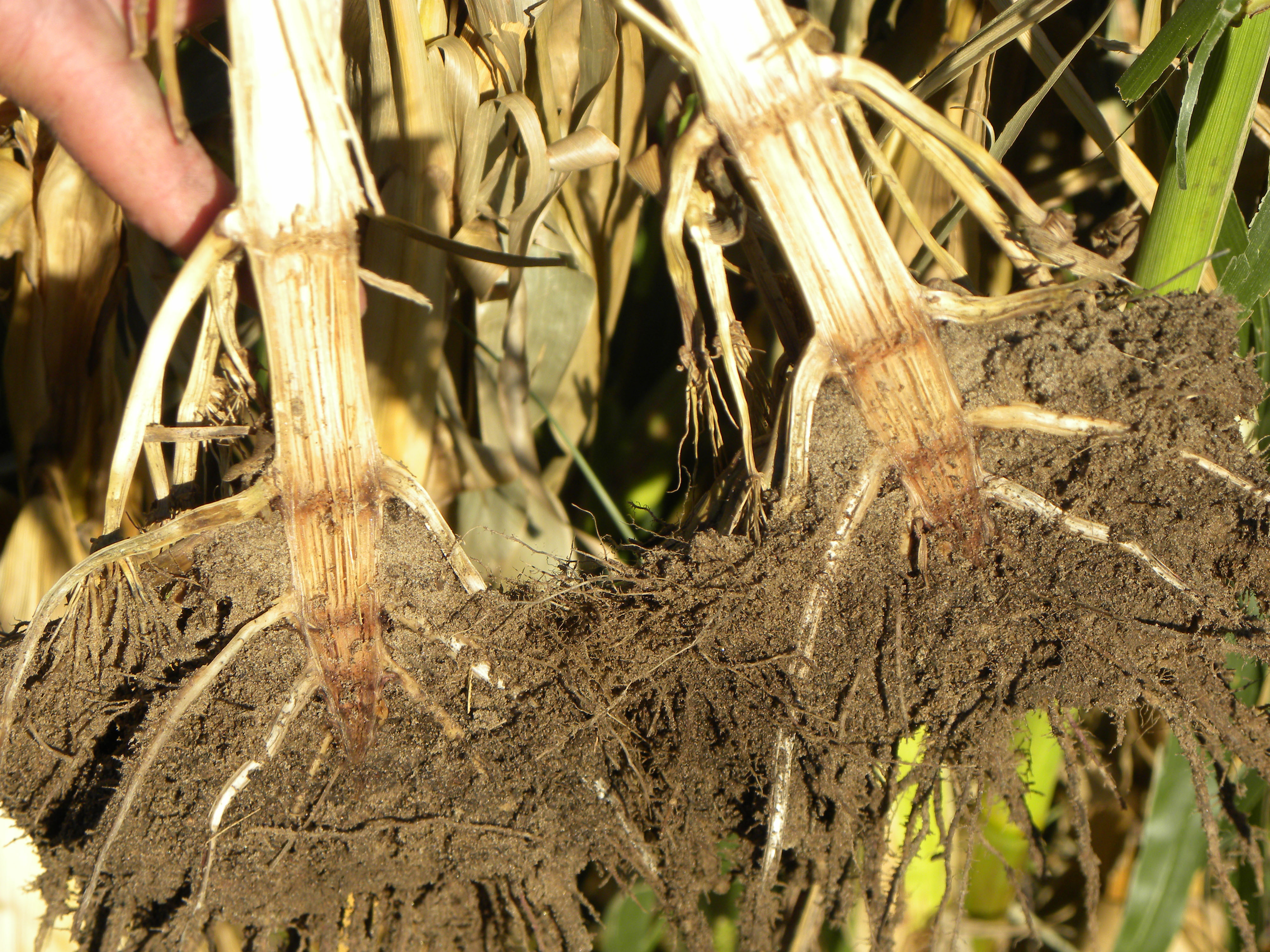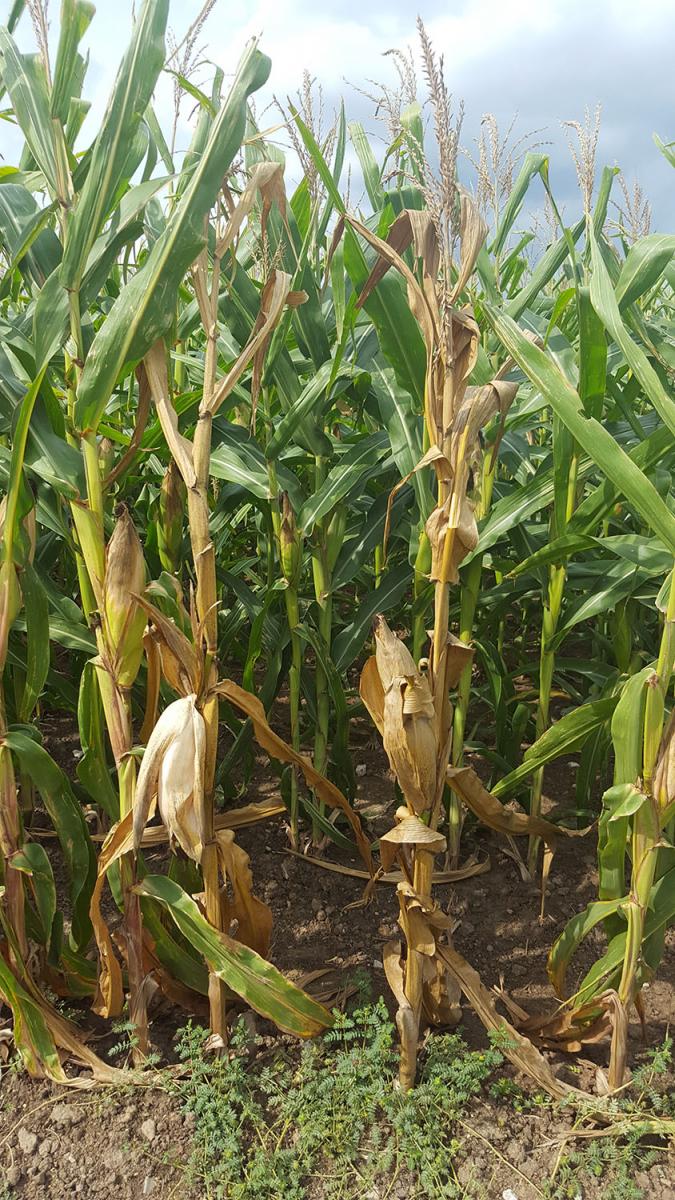Stalk rots can reduce corn yield by killing the plant before physiological maturity. Affected plants have a foul odor.

Several Types Of Stalk Rot Are Common At This Time Of Year Agriculture News Kearneyhub Com
The causal agent is Gib-berella zeae whose asexual stage is Fusarium graminearum a common seedling pathogen of corn and the causal agent of Fusarium head blight or scab of wheat barley oat and rye.

Stalk rot of corn. Common stalk rot diseases associated with lodging include. Stalk rot severity maybe exacerbated by stress on corn plants due to leaf diseases. Bacterial stalk rot is not common but often shows up with overhead irrigation of corn especially where the water source is a lake pond or slow-moving stream.
Bacterial stalk rot of corn. They can also cause plant lodging increasing harvest losses and impeding harvest progress. Consider Diplodia stalk rot as either an air-borne or a soil borne disease.
In addition to anthracnose stalk rot we are also seeing Gibberella stalk rot picking up. Reports and observations of lodging are starting to come in. Also infects sorghum sugarcane wheat cotton banana pineapple and tomato.
Choose corn products with greater levels of resistance to Diplodia stalk and ear rots and with good standability ratings. Several corn fields are beginning to show stalk rot and top dieback symptoms. Gibberella stalk rot is caused by the same fungus that is responsible for Gibberella ear rot on corn and Fusarium head blight of wheat and barley.
These diseases reduce annual yields by a minimum of 5 percent. Therefore rotation to crops other than corn for 1-2 years is very effective at reducing the inoculum in the field. Fusarium stalk rot of corn.
Anthracnose stalk rot is caused by the fungus Colletotrichum graminicola which also causes a leaf disease and is a common cause of top rot disease of corn. Bacterial stalk rot is caused by Erwinia dissolvens. It causes decay of the first internode above the soil.
Fields that experienced wet growing conditions in the spring may have been infected by Fusarium species. The pythium stalk rot of corn considered here develops rapidly during a few days of very high temperature and high humidity becomes apparent when the plants fall over and then when the temperature falls progresses no farther. Caused by Fusarium verticilioides fungus formerly called Fusarium moniliforme found everywhere corn is grown.
Infection is favored by warm and wet conditions. It is among the most common stalk rots in the Midwest with F. The distribution and prevalence of stalk rot diseases vary from year to year.
Gibberella stalk rot is distributed worldwide and is one of the most common stalk rots in the Corn Belt. The efficacy of biochar prepared from rice husk and bamboo at 500C against stalk rot of corn caused by Fusarium graminearum was tested at biochar doses of 0 05 1 2 and 3 ww. Gibberella stalk rot often causes a.
As foliage is damaged less photosynthetic capacity is available from the leaves to produce carbohydrates for the plant. Management of Diplodia stalk rot is through use of resistant hybrids balanced soil fertility appropriate plant population for the hybrid selected and crop rotation. Fusarium stalk rot is caused by multiple fungal pathogens in the Fusarium genus.
Top dieback is when two or more topmost corn leaves die prematurely while the lower leaves are still green. The disease is identifiable by the shiny black discoloration of the outer stalk rind that develops in blotches or streaks. Stalk rots in corn.
Overwinters as mycelia in infected crop debris spread by wind and rain splash. However the diseases are present in most years even though it may be at low levels. Stalk rots are possible threat to corn.
CORN STALK ROTS Stalk rots are the most common diseases of dent corn in Illinois. Anthracnose stalk rot is typically worse in fields in a corn-on-corn rotation andor no-tilled and planted to a susceptible hybrid. If ears from a fallen plant come in contact with the ground for an extended period grain quality may also be reduced.
Losses are due to 1 premature plant death. Verticillioides the primary causal pathogen. For corn foliar diseases such as northern corn leaf blight NCLB and gray leaf spot GLS it is well known that high severity can lead to stalk integrity issues.
Corn stalk rot pathogens overwinter in infected corn stalks or in the soil and release spores in spring. The rind and the pith become soft brown and water-soaked. The stalk typically twists and falls over but the plant may remain green for several weeks because the vascular tissue is not destroyed.
In more advanced stages the disease can cause the development of black lesions visible on the outside of. Anthracnose stalk rot symptoms are usually most apparent just prior to plant maturity. Affected plants have shredded pith that may be a.
Early-season seedling diseases can cause stalk rot issues in some area corn fields. It is more severe where corn follows corn. This infection can develop into crown rot.
The majority of stalk rot damage in Ontario is caused by three fungi Anthracnose Gibberella and Fusarium. Leaf diseases predispose plants to stalk rots so if a field had leaf diseases it probably will have stalk rots unless leaf diseases were aggressively controlled with fungicides. Bacterial stalk rot of corn is favored under conditions of high air temperatures and wet weather or high humidity.
In general the application of biochar controlled the disease. The fungus destroys the stalk tissue for 1 or 2 inches at one of the lower internodes causing. Compared with the 0 control biochar addition at the low concentration of 05 enhanced corn growth.
Many corn fields were affected by gray leaf spot because of high temperatures and humidity. Fusarium graminearum also called Gibberella zeae. Spores are splashed onto leaves and stalks by rain.
For this reason disease tends to be more severe in wheat-corn rotations. Anthracnose diplodia fusarium gibberella and charcoal stalk rots. Losses in certain years reach 10 to 20 percent or more of the expected yield.
Crown Rot in Corn. Facts on Fusarium Stalk Rot. Reduce Inoculum The fungus that causes Diplodia ear and stalk rots only infects corn and survives only on corn debris.
Stalk rots cause the entire plant to die prematurely which can lead to plants lodging under windy conditions making harvesting problematic.

Scout For Ear And Stalk Rots In Corn Maryland Agronomy News

Stalk Rots On Corn Cooperative Extension University Of Delaware

Corn Plants Exhibiting Symptoms Of Top Dieback Stalk Rot Crops Agupdate Com

Stalk Rot Diseases Including Anthracnose Top Dieback Developing In Some Fields Cropwatch University Of Nebraska Lincoln

Stalk Rot Diseases Including Anthracnose Top Dieback Developing In Some Fields Cropwatch University Of Nebraska Lincoln

Scout Corn Fields For Stalk Rot Integrated Crop Management